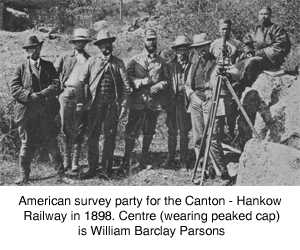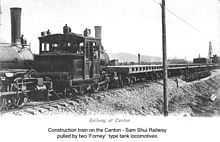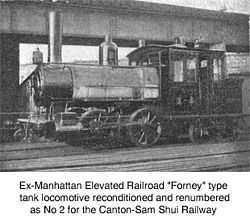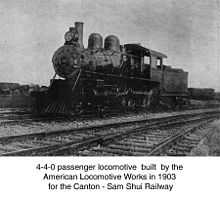Guangzhou–Sanshui Railway
| Guangzhou–Sanshui Railway | |||||||||||||||||||||||||||||||||||||||||||||||||||||||||||||||||||||||||||||||||||||||||||||||||||
|---|---|---|---|---|---|---|---|---|---|---|---|---|---|---|---|---|---|---|---|---|---|---|---|---|---|---|---|---|---|---|---|---|---|---|---|---|---|---|---|---|---|---|---|---|---|---|---|---|---|---|---|---|---|---|---|---|---|---|---|---|---|---|---|---|---|---|---|---|---|---|---|---|---|---|---|---|---|---|---|---|---|---|---|---|---|---|---|---|---|---|---|---|---|---|---|---|---|---|---|
| Line length: | 49 km (30 mi) | ||||||||||||||||||||||||||||||||||||||||||||||||||||||||||||||||||||||||||||||||||||||||||||||||||
| Track gauge: | 1,435 mm (4 ft 8 1⁄2 in) | ||||||||||||||||||||||||||||||||||||||||||||||||||||||||||||||||||||||||||||||||||||||||||||||||||
| Stations and structures | |||||||||||||||||||||||||||||||||||||||||||||||||||||||||||||||||||||||||||||||||||||||||||||||||||
Legend
| |||||||||||||||||||||||||||||||||||||||||||||||||||||||||||||||||||||||||||||||||||||||||||||||||||
The Guangzhou–Sanshui Railway or Guangsan Railway (Chinese: 广三铁路), historically known as the Canton– Sam Shui Railway, is a railway line in Guangdong, People's Republic of China, built from 1902 to 1904. In 2004, the line merged with the Sanshui–Maoming Railway to form the Guangzhou–Maoming Railway.

Introduction
The 32 mile-long railway line from Canton (Guangzhou) to Sam Shui (Sanshui) was constructed between 1902 and 1904 by American engineers. Commencing from its Shek Wei Tong: (simplified Chinese: 石围塘; traditional Chinese: 石圍塘; pinyin: Shíwéitáng) terminus and depot in Canton (Guangzhou) this short line was built as a branch line of the Canton–Hankow (Guangzhou–Wuhan) Railway and was the first portion of this southern trunk line to be constructed. The first 10 miles from Canton to Fatshan (Foshan) opened in late 1903 and the remainder to Sam Shui was completed and formally opened on 23 September 1904.[1][2]
Financing and survey

The origins of this railway go back to the so-called “Battle for Concessions” during 1898 when Western powers bickered among themselves over the extraction of railway concessions from the Qing Dynasty government, severely weakened by their loss of the war with Japan over Korea. Not wishing to be left out of the fray, a powerful American syndicate known as the American-China Development Company, formed under the auspices of financier Calvin Brice in April 1898, obtained a concession for the construction of the 750 mi (1,210 km)-long Canton–Hankow (Guangzhou–Wuhan) Railway. In the autumn of 1898 a team of American engineers led by Chief Engineer William Barclay Parsons was dispatched to China to conduct the survey. Barclay Parsons describes the difficulties endoured during this survey in his own account of this work “An American in China” published in 1900 after his return to USA.[3]
Construction delayed

The American syndicate soon ran into all kinds of difficulties. The Spanish–American War had broken out causing a shortage of funds and a Belgian-French Syndicate, who were hoping to control all the planned trunk lines from Peking (Beijing) to southern China, opposed the American syndicate and pressured the Chinese Government to rescind their agreement. On top of this, the leading driver of the scheme, Senator Brice, died leaving the syndicate without any enthusiastic and wealthy investors. Many of the Americans, who owned shares, became disillusioned and gradually sold out to French-Belgian interests, while the battle for control of the line continued. The next incident to delay the construction was the 1900 Boxer Uprising. However eventually in the autumn of 1902, with the American syndicate now under the presidency of Barclay Parsons, the short Canton-Sam Shui branch line was commenced. The American team of engineers sent to build the branch was headed by Chief Engineer C.W. Mead CE.[2]
Fatshan section

The first section of about 10 miles from Canton (Guangzhou) to Fatshan (Foshan) was double-tracked standard gauge line using 75 lb (34 kg) steel rails. Because of the shortage of funds economies were made by purchasing used equipment from the United States and this included eight reconditioned ex-Manhattan Elevated Railway ‘Forney” type tank locomotives, which had been built in 1885-6 and were designed for running backwards (cab-first).[4] Most of the stations along the route were initially small temporary mat-shed structures and the only permanent station erected in time for the opening of the railway was at Fatshan. This section was opened to traffic in late 1903.
Sam Shui section
Construction of the next section from Fatshan to Sam Shui was then continued and a ceremony attended by the railway’s senior staff and a number of invited guests was held on 22 September 1904 to drive in the ‘last (silver) spike’, marking completion of the line.[5] By this time the railway had received its first two passenger engines which were 4-4-0 tender locomotives built by the American Locomotive Company of Pittsburgh in 1903. In later years it acquired similar locomotives from both the Baldwin and Lima locomotive companies[6]
Shek Wei Tong depot and coach building shops

By 1909 the Shek Wei Tong maintenance depot in Canton had been enlarged and incorporated a machine shop and coach works capable of producing their own 60-foot-long (18 m) steel passenger coaches.[7] The railway still exists and continues to be known as the Guang - San line as far as Sam Shui (Sanshui) from where the line now extends as part of a Provincially owned Sanmao Railway Company (traditional Chinese: 三茂線 simplified Chinese: 三茂线 ) line to Maoming[8][9][10]
References
- ↑ "Railway Enterprise in China - An Account of its Origin and Development" by Percy Horace Kent, London 1907
- ↑ 2.0 2.1 The Far Eastern Review: January 1906
- ↑ "An American Engineer in China" by Wm. Barclay Parsons, New York 1900
- ↑ The Locomotive Magazine,April 1903
- ↑ The Far Eastern Review October 1904
- ↑ "Steam Locomotive Lists in China" by Mitsuhiro Katsurawa, Stephenson Locomotive Society
- ↑ The Far Eastern Review,November 1909
- ↑ China Railway Atlas, Third Edition, Quail Map Company, 2008
- ↑ http://www.hkrs.org.hk/members/rwong/sanmao98/index.htm
- ↑ "臟隔穦". hkrs.org.hk.
| Wikimedia Commons has media related to Canton – Sam Shui Railway. |